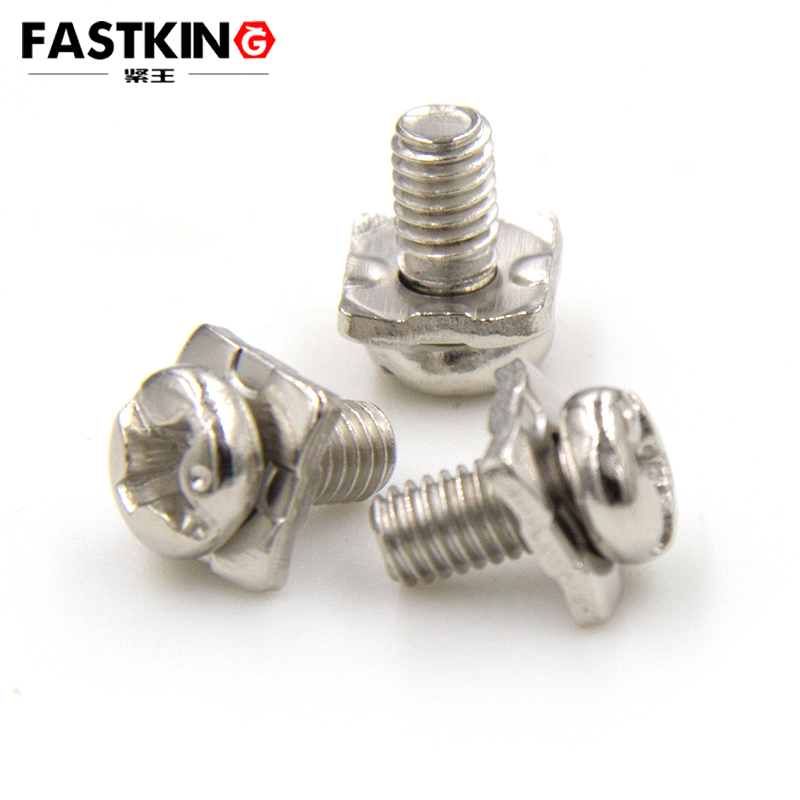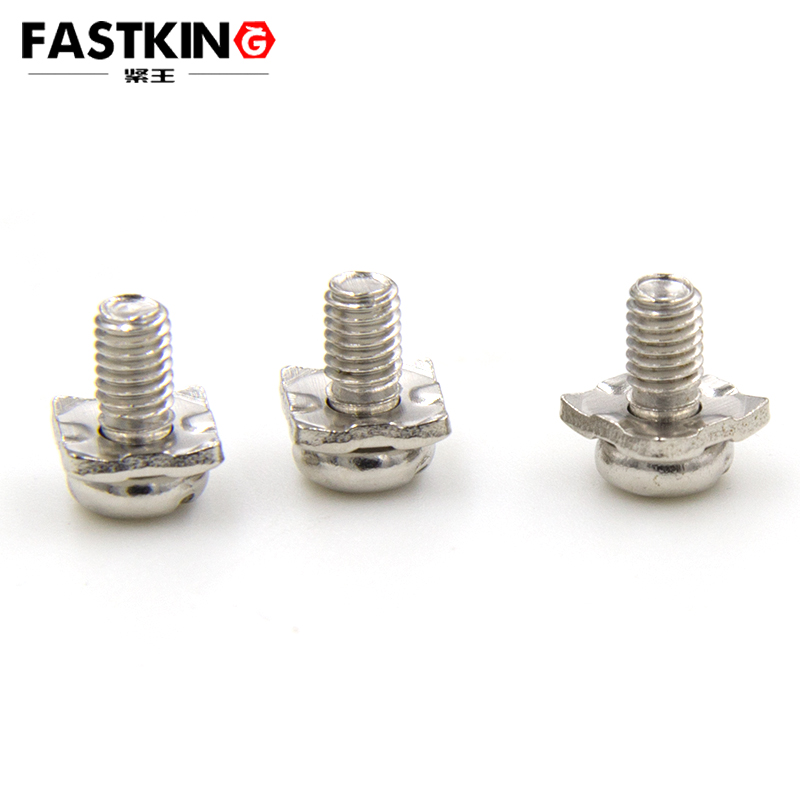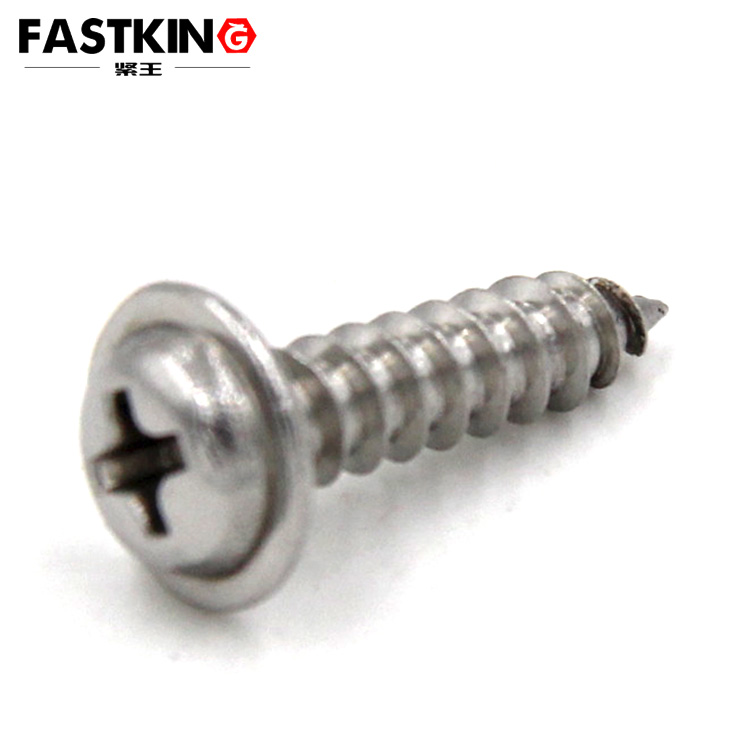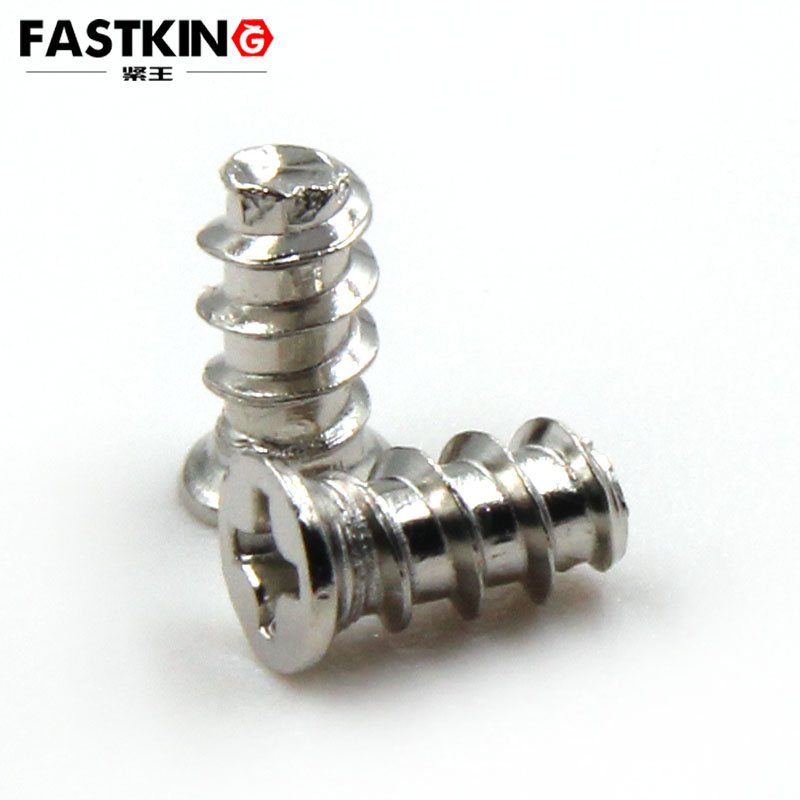- small screw,micro fastener,mini screw
- 0756-8586520
Countersunk cross flat-tail self-tapping screws
- Product description:It delivers stable performance across scenarios ranging from home kitchen and bathroom renovations to outdoor engineering installations. A thorough understanding of its material properties, structural
I. Stainless Steel Material: Core Advantage of Breaking the "Corrosion Curse"
The key difference between stainless steel countersunk Phillips flat-tip self-tapping screws and ordinary carbon steel screws lies in the stainless steel material they adopt (commonly 304 and 316 grades). This material contains alloying elements such as chromium and nickel, which form a stable oxide film on the surface, fundamentally solving the problems of easy rusting and short service life of ordinary screws. Its specific advantages are reflected in three dimensions:
1. Super Corrosion Resistance: Withstanding Erosion in Multiple Scenarios
Ordinary carbon steel screws are prone to oxidation and rust in humid, acid-base environments, leading to thread jamming and loose connections. However, the corrosion resistance of stainless steel allows it to easily cope with these challenges. 304 stainless steel, containing 18% chromium and 8% nickel, can resist erosion from daily humid environments (such as bathroom moisture and kitchen fumes), making it suitable for fixing indoor kitchen and bathroom equipment. 316 stainless steel, with the addition of molybdenum on this basis, has stronger corrosion resistance and can withstand more complex environments such as seawater and mild acid-base gases in chemical workshops, making it ideal for fastening outdoor sea-view facilities and chemical equipment. For example, 316 stainless steel screws used to fix wall panels of seaside wooden houses can resist corrosion from seawater salt, remaining rust-free after long-term use; 304 stainless steel screws for fixing pipelines under kitchen sinks can prevent rust caused by sewage and detergent residues, extending their service life by 5-8 times.
2. Stable Strength: Balancing Toughness and Durability
Stainless steel not only offers corrosion resistance but also excellent mechanical strength and toughness. During fastening, even under a certain torque, it is less likely to experience thread breakage or head deformation, making it particularly suitable for substrates with high fastening strength requirements, such as thin metal sheets and hard plastics. For instance, when fixing aluminum alloy window frames, stainless steel screws can withstand the tensile force from the frame's own weight and wind, preventing the frame from loosening due to insufficient screw strength; when assembling hard plastic toolboxes, their toughness can prevent the screws from breaking due to the hard material during driving, improving assembly success rates.
3. Non-Magnetic and Environmentally Friendly: Adapting to Special Scenarios
Some stainless steel grades (such as 304) have non-magnetic properties, an advantage that allows them to be safely used in scenarios sensitive to magnetic fields, such as electronic equipment and medical devices. For example, non-magnetic stainless steel screws for fixing medical device casings can avoid magnetic field interference with the accurate operation of the equipment; when fixing circuit boards inside electronic instruments, they can also prevent magnetic fields from affecting signal transmission, ensuring stable equipment operation.
II. Structural Design: Balancing "Invisible Aesthetics" and "Efficient Practicality"
In addition to material advantages, the structural design of stainless steel countersunk Phillips flat-tip self-tapping screws is also carefully considered. Every detail revolves around "adaptability," "convenience," and "aesthetics," which can be broken down into three key parts:
1. Countersunk Head: Achieving "Seamless" Aesthetics
The countersunk head design is the core of the screw's "invisibility." Its head is conical, perfectly fitting the prefabricated countersink on the workpiece surface. When tightened, the head is flush with the substrate surface, neither protruding nor sinking. This design is particularly important in scenarios with high aesthetic requirements — for example, when joining wooden wardrobe door panels, countersunk screws can be hidden inside the panels, avoiding exposed heads that damage the overall wood grain beauty; when fixing decorative wall panels in well-decorated houses, "invisible" screws can keep the walls flat and neat, enhancing the decoration texture. At the same time, the flush surface also prevents clothing snags and skin scratches, improving safety in use.
2. Phillips Drive: High Compatibility, Lowering Operation Threshold
The Phillips slot on the head is a mainstream driving method. Compared with slotted drives, it can transmit greater torque and is less prone to "cam-out" (damage to the slot caused by screwdriver slippage). It is easily compatible with both manual screwdrivers and electric bits, significantly improving installation efficiency. In mass assembly scenarios, such as furniture factories assembling wardrobes and decoration companies installing wall panels, the Phillips slot can work with automated tools to achieve rapid fastening, reducing labor costs. For example, when decorators use electric bits to install wooden decorative wall panels, the precise driving of the Phillips slot ensures each screw is tightened quickly without damaging the head, increasing construction speed.
3. Flat-Tip Self-Tapping Threads: No Pre-Drilling Required, Adapting to Multiple Substrates
The combination of the flat-tip design and self-tapping threads allows the screw to be directly driven into the substrate without pre-drilling and tapping, making it particularly suitable for soft or thin substrates such as wood, plastic, and thin metal sheets. The flat tip has a smooth end without a sharp drill point, which reduces damage to the substrate during driving and avoids piercing the back of the substrate. For example, when assembling a wooden bookshelf, there is no need for pre-drilling — simply drive the screw into the wood with a screwdriver to achieve stable fixing; when fixing the shelf of a plastic storage box, the flat-tip design prevents the screw from piercing the box body, protecting the internal items. Meanwhile, the cutting ability of the self-tapping threads forms a tightly fitting internal thread in the substrate, improving connection stability and avoiding loosening.
III. Application Scenarios: Comprehensive Coverage from "Indoor Precision" to "Outdoor Harshness"
The material advantages and structural design of stainless steel countersunk Phillips flat-tip self-tapping screws make them suitable for an extremely wide range of scenarios, especially excelling in scenarios where "corrosion resistance" and "aesthetics" are prominent. Their core applications fall into three categories:
1. Indoor Kitchen, Bathroom, and Decoration Scenarios: Balancing Aesthetics and Moisture Resistance
Indoors, these screws are an ideal choice for kitchen and bathroom equipment and fine decoration. For fixing kitchen cabinet door panels and installing pipeline brackets under sinks, 304 stainless steel can resist corrosion from oil fumes and sewage, while the countersunk head design maintains the aesthetics of cabinets and walls; for fixing bathroom towel racks and mirror cabinets, their moisture-resistant properties prevent screw loosening due to rust, and the flat-tip self-tapping threads adapt to bathroom plastic and wooden substrates without complex drilling steps. Additionally, for fixing wall wood trim and baseboards in home decoration, their "invisible" and corrosion-resistant advantages balance aesthetics and long-term durability.

2. Outdoor and Special Environment Scenarios: Withstanding Harsh Erosion
Outdoor scenarios have high requirements for screw corrosion resistance, and stainless steel screws excel in such cases. For fixing wall panels of outdoor wooden pavilions and connecting brackets of aluminum alloy awnings, 304 stainless steel can resist erosion from rainwater and ultraviolet rays; for joining wooden planks of seaside boardwalks and fixing pipeline brackets in chemical parks, 316 stainless steel can withstand corrosion from seawater salt and chemical gases, ensuring long-term stability. For example, stainless steel screws used in outdoor seats by the sea can prevent rust caused by seawater, keeping the seats safe for long-term use.
3. Electronics and Light Industry Scenarios: Adapting to Precision and Safety
In the assembly of electronic equipment and light industrial products, the non-magnetic properties and structural advantages of stainless steel screws are also applicable. For fixing electronic instrument casings, non-magnetic stainless steel avoids interfering with equipment operation; for joining parts of hard plastic toys, the flat-tip self-tapping threads adapt to plastic substrates, preventing part damage; for fixing internal brackets of small home appliances (such as coffee machines and toasters), the corrosion-resistant material can cope with mild moisture inside the equipment, ensuring long-term stable operation.
IV. Installation and Selection: Avoiding Mistakes to Improve Fastening Effect
Although stainless steel countersunk Phillips flat-tip self-tapping screws are easy to operate, correct installation methods and selection logic are still crucial to ensuring effectiveness. The key points to note are as follows:

1. Installation Key Points: Details Determine Stability
Three core details should be focused on during installation: First, "substrate adaptation" — these screws are suitable for soft or thin substrates such as wood, plastic, and thin metal sheets. If used on hard substrates such as thick steel plates or stone, pre-drilling is required to avoid screw breakage. Second, "torque control" — when using electric tools, the appropriate torque should be adjusted to avoid substrate cracking (especially for wooden and plastic substrates) due to excessive torque; when operating manually, stop when the screw head is flush with the substrate and there is no looseness. Third, "countersink matching" — the depth and diameter of the countersink must match the screw head: too shallow will cause the head to protrude, while too deep will affect strength. It is recommended that the countersink depth be 1.2 times the height of the screw head.
2. Selection Logic: Choosing Material and Specifications Based on Scenarios
Two key points should be emphasized when selecting screws: First, "material selection" — 304 stainless steel is suitable for indoor dry and slightly humid scenarios (such as living room decoration and ordinary home appliances); 316 stainless steel is required for outdoor, seaside, and chemical environments. Second, "specification matching" — select the screw length based on the substrate thickness to ensure the threads are fully driven into the substrate (the length should be 3-5mm longer than the substrate thickness); the nominal diameter (e.g., M3, M4, M5) is selected based on the substrate hardness and load-bearing requirements — larger diameters are suitable for scenarios with high hardness and heavy load-bearing. For example, to fix a 15mm-thick wooden board, a 304 stainless steel screw of M4×18mm can be selected; to fix a 20mm-thick aluminum alloy board in an outdoor seaside scenario, a 316 stainless steel screw of M5×25mm is suitable.
V. Conclusion: The "Corrosion Resistance and Aesthetics Code" in a Small Screw
Although stainless steel countersunk Phillips flat-tip self-tapping screws are small in size, they break the corrosion limitation with stainless steel material and balance aesthetics and practicality with structural design. It resists rust in humid environments, achieves "invisibility" in delicate scenarios, and adapts efficiently to various substrates, becoming a "versatile tool" from home decoration to outdoor engineering. Understanding its material properties, structural value, and selection methods allows us to apply it accurately in different scenarios, ensuring both the stability and durability of fastening and the simplicity and aesthetics of appearance, truly achieving "worry-free fastening and long-lasting beauty."





